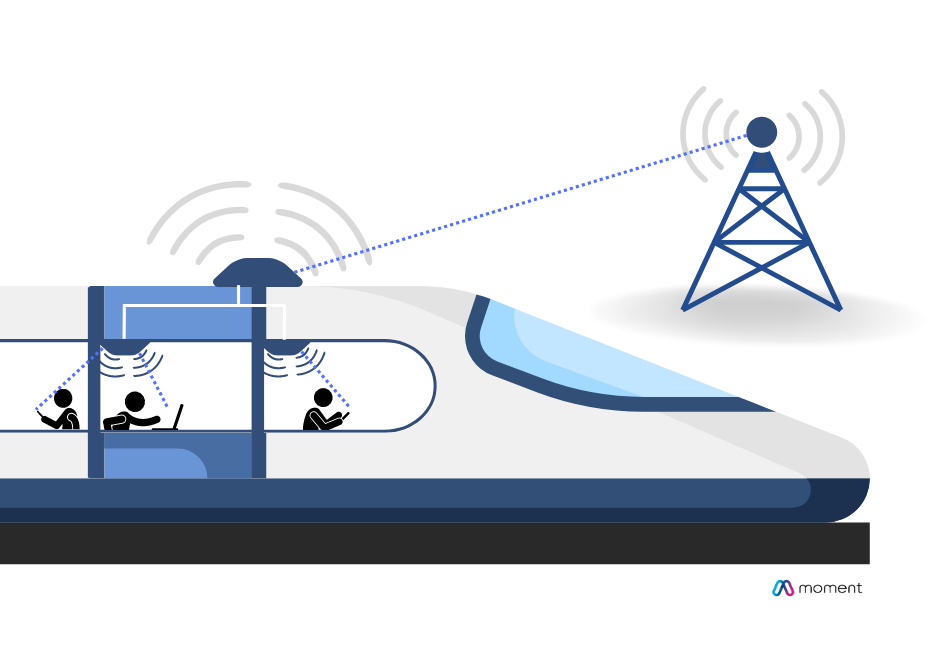The rail industry experienced a year of recovery in 2022 after a challenging period caused by the COVID-19 pandemic. As passenger numbers gradually returned to pre-pandemic levels, the industry began prioritizing the travel experience. With continuous digital innovations, operators have been making travel more convenient for customers by implementing real-time passenger information systems, improved mobile connectivity, and station developments, all aimed at encouraging passengers to return to rail travel.
The digitization of public transport worldwide has resulted in a steady increase in data consumption on trains and buses, making Wi-Fi a crucial technology in transforming the passenger experience and providing new opportunities for operators.
Wi-Fi has become a fundamental aspect of travel, but how does it actually work on public transport?

Wi-Fi access points are installed on the train’s roof and connected to antennas positioned alongside the tracks. The network is then distributed inside the train in the form of Wi-Fi. While this might seem simple, numerous challenges must be addressed.
Maintaining a continuous connection at a speed of 300 km/h requires relay antennas placed every three kilometers. In addition, the network quickly becomes saturated, with around 500 simultaneous passenger connections on a train. Even the frame of the train is a challenge for good connectivity, as the shielding effect of the train carriage against electromagnetic waves can act as a barrier and limit the spread of the network inside the train.
With its potential for higher capacity, lower latency, and greater throughput than 4G networks, 5G is often seen as the ultimate solution. Although 5G does indeed offer several advantages for increasing data capacity on passenger transport, it is essential to view it as an upgrade rather than a complete overhaul. While 5G provides more spectrum, advanced antenna technology, and improved routing from Mobile Network Operators (MNOs), it still faces challenges similar to previous generations of wireless communication technologies.
Infotainment, the seamless alternative for an optimized experience
Beyond connectivity, onboard Wi-Fi unlocks a wide range of entertainment options for passengers. It enables the provision of entertainment, e-commerce and information portals with access to pre-downloaded movies, music, and games, ensuring seamless usage without latency. Additional services, such as real-time travel information, shopping paywalls, or destination guides, contribute to an enriched passenger experience.
When passengers choose entertainment from onboard infotainment portals instead of streaming platforms like Netflix or YouTube, they download less data and avoid disruptions in poorly covered areas. This extends to all the other multimedia content.
Making railway travel more comfortable and comparable to air travel or cars is a key objective. From station entry to boarding the train, ensuring passengers’ well-being by providing relevant information at the right moments and entertainment options creates a unique and attractive customer experience. As the digital transformation of public transport continues, Wi-Fi remains a crucial component, enabling operators to offer innovative services and create a more engaging and enjoyable journey for passengers.
With our expertise in the aviation sector, we help our railway customers to achieve these new goals thanks to our range of innovative solutions and our extensive content catalog.



